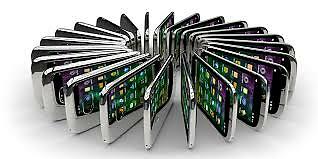The main reason for building an app is, of course, revenue. But how can one make a powerful money-making machine out of this business? The answer is obvious: through building brand awareness, gaining customer loyalty, providing unique benefits and more. To develop this marketing channel, an appropriate strategy/business model is required.
Almost every individual has a mobile device these days. But simply creating a mobile app does not guarantee a huge return on investment. Remember that 2% of all http://theappsolutions.com developers claim about 54% of all app revenues. To join those lucky 2%, you have to make the effort by choosing the most appropriate business model.
But before moving on to the most efficient models for your mobile applications, pay attention to the two critical factors that will determine which strategy is right for you - the type of application and the behaviors of your target audience.
In-app purchasing. This popular model is focused on turning a free app into a stable source of income by selling physical/virtual goods within the app. Have you ever thought of offering a personalized avatar or virtual currency to your users? In-game currency such as coins can be exchanged for real goods. Thus, you kill two birds at the same time: you attract more users and increase the gamble.REVENUE???
As mentioned above, this model only suits particular types of applications. If you create shopping-based apps, you should know they are linked to affiliate-style marketing; at the same time, games are a better for in-app purchasing.
Referral marketing/affiliates. No need to devote large screen space to the third party any more, it’s time to monetize applications via links. It works this way: all present mobile links are transformed into revenue-generating links. There are no irritating ads that may distract a user from using the app.
One more option is to promote other mobile applications to earn commissions each time the app is bought or downloaded.
In-app advertising. This one is, perhaps, the most popular solution for smartphone apps. The scheme works the following way: you replace the cost-barrier to buying your application by making downloads available. This makes it possible to spread your user base and collect as much information on your audience as possible. This data can then be sold to app publishers who are willing to pay for placing a targeted ad in your application.
By using this business model, Facebook has achieved tremendous growth in their mobile advertising - up by 151% during the second quarter of 2014 alone.
Freemium (a.k.a. gated features). Not all features are for free here - some require payment in order to be unlocked. Because of natural human curiosity, people are willing to spend money to do that. To succeed with this model, you need to assure your customers of the value of your hidden content. Or you may stress that there is no way of completing a game or passing a course without getting the entire content.
Paid applications. It is easy to guess that this option means paying for the app from the very beginning. App stores exist for just such reasons. As a rule, the full version of these applications cost from $0.99 to $999.99.
To sum up, monetization is impossible without selecting a correct business model first. Only after doing so can the developers prepare or integrate technology to guarantee the success of the chosen business model.
Artikel
Business Models for Mobile App Developers
The main reason for building an app is, of course, revenue. But how can one make a powerful money-making machine out of this business?

Alle rechten voorbehouden
Laat een reactie achter